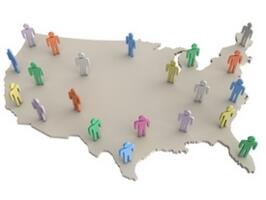Sky Not Falling With Japanese Birthrates
A Commentary By Froma Harrop
There's one complaint visitors to Tokyo rarely make, and that is "not enough people." With a population of 36 million, the Tokyo metropolitan area stuffs an average 6,800 people in each square mile. By contrast, the New York metro area, with 19 million residents, has a density of 2,800 people per square mile.
The Tokyo subways still employ the legendary "people pushers," who shove passengers into the already packed cars. The Japanese have a word for their daily trip to work: "tsukin jigoku," or "commuter hell."
In an area about the size of Montana, Japan has a population of 128 million. Montana has about 1 million. If any country could do with fewer people, it would be Japan.
Yet so much head-smacking greets demographic projections showing that Japan's population is expected to fall by about a third to 87 million by 2060. The reason for these dramatic numbers is very low birthrates.
Right-wing populists in the United States associate growing numbers with growing economies and national power. And the politics against abortion and birth control also contribute to the belief that more people make a stronger nation. A 2008 documentary, "Demographic Winter," seeks to make these arguments. But the viewer suspects other agendas when it blames falling birthrates on the decline in marriage, extramarital sex and Hollywood.
The documentary's website oddly ties the 1989 Japanese stock market crash and ensuing economic crisis to that country's declining birthrates. The bursting of a stock and real-estate bubble would seem more like it. And interestingly, Japan's average life expectancy jumped 4.2 years to 83 during the so-called "Lost Decade." Japan's life expectancy is now nearly four years higher than America's.
Many Japan observers see the demographic trend not as a national problem, but as a goal. Fewer people would enhance the island nation's food security. It would curb the cost of housing. Fewer people means fewer houses, fewer cars and more open space. It makes labor more valuable.
It is true that Japan is a rapidly aging society, as is ours. The Japanese face the challenge of caring for many elderly people in a country with fewer young workers. Higher retirement ages will deal with some of the labor needs, and more experienced older workers are actually good for an economy.
In America, the usual recommendation for these changing demographics is to admit more immigrants. The Japanese, long hostile to immigration, see automation as the answer. The country's engineers are developing robots to do much of the nursing home-type work. The Japanese government is investing large amounts in these technologies, turning a challenge into a growth industry.
Birthrates do change. Scandinavian countries saw them fall sharply in the '80s, before they started rising again. Norway is almost back to the replacement rate. And Japan's government is proposing new programs to make bearing and raising children easier on their working parents.
But for a crowded place like Japan, a population decline mostly points to a more pleasant future. That's the view of Stephen Harner, an American who lived in Japan for many years. Imagining what the country will be like in 50 years, he wrote in Forbes: "It will probably be an easier place in which to live. Less crowded, certainly. The countryside, in particular, will be even more beautiful and enchanting."
Still, the stories about Japanese demographics use startling words. CNN recently called the projections "staggering." But here's the less dramatic reality: A Japan with 87 million people will have the same population it had in the 1950s. That's hardly "depopulation," as the alarmists would have it, and a commute without people pushers sounds OK to me.
COPYRIGHT 2012 THE PROVIDENCE JOURNAL CO.
DISTRIBUTED BY CREATORS.COM
See Other Political Commentary.
See Other Commentaries by Froma Harrop.
Views expressed in this column are those of the author, not those of Rasmussen Reports. Comments about this content should be directed to the author or syndicate.
Rasmussen Reports is a media company specializing in the collection, publication and distribution of public opinion information.
We conduct public opinion polls on a variety of topics to inform our audience on events in the news and other topics of interest. To ensure editorial control and independence, we pay for the polls ourselves and generate revenue through the sale of subscriptions, sponsorships, and advertising. Nightly polling on politics, business and lifestyle topics provides the content to update the Rasmussen Reports web site many times each day. If it's in the news, it's in our polls. Additionally, the data drives a daily update newsletter and various media outlets across the country.
Some information, including the Rasmussen Reports daily Presidential Tracking Poll and commentaries are available for free to the general public. Subscriptions are available for $4.95 a month or 34.95 a year that provide subscribers with exclusive access to more than 20 stories per week on upcoming elections, consumer confidence, and issues that affect us all. For those who are really into the numbers, Platinum Members can review demographic crosstabs and a full history of our data.
To learn more about our methodology, click here.



